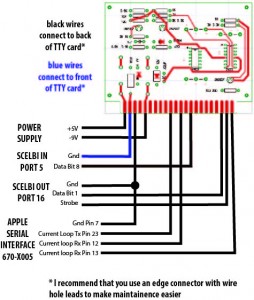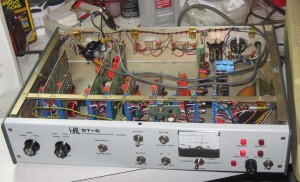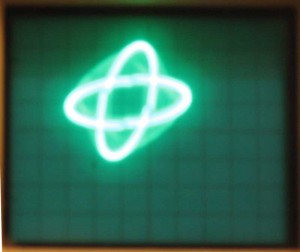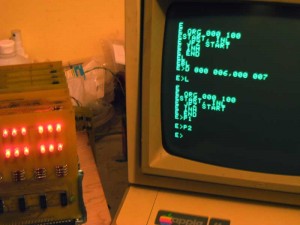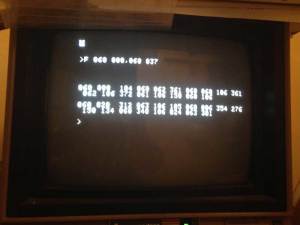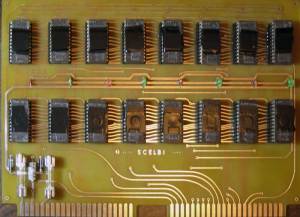A previous post showed how I attempted to connect the SCELBI TTY to an Apple IIe with an old serial card that supported current loop. Well I’ve been working on some of the issues and now have it working good enough to post some of the details. With the standard Apple 80 column scroll routine, I can only reliably get 8 lines to scroll at 110 baud, but it’s working pretty decently, with that limitation.
First of all, here is how the TTY card is connected. The standard SCELBI MEA software assumes these port assignments.
If you try repeating this experiment, be aware that there are two versions of the Apple Serial Card firmware,. However, since I don’t use the standard driver, it doesn’t matter which version you have.
The simple TTY emulation source code can be downloaded from www.willegal.net/appleii/ttyemul.asm. It is written to use an assembler called DASM, which can be found and downloaded with a web search.
You can experiment with changing the window size by changing the second line in the program. Note that I started with a “hijacked” version of the original serial card driver, but it has been greatly modified. This code assumes a IIe with 80 column card. For display, I had a lot of issues getting CR not to send a LF, but still return to beginning of the line. I also implemented a bare bones bell that sounds only if no characters are coming in.
I suppose a custom “fast” scroll routine might help with increasing the window size, but I haven’t had time to work on that. I think I left enough of the original Apple II peripheral card software mechanism in place, that it wouldn’t be too hard to move the code to PROMs that would reside on the serial card itself. For now, it assumes slot 2 for the serial card, and slot 3 for the 80 column card. Let me know if you have any luck with this.
I’m using a modified version of this software as the basis for my Apple II RTTY software, but the transmit side of that implementation needs some work. I want to create a way to type in some canned strings for transmitting CQ with a call sign and so forth.

